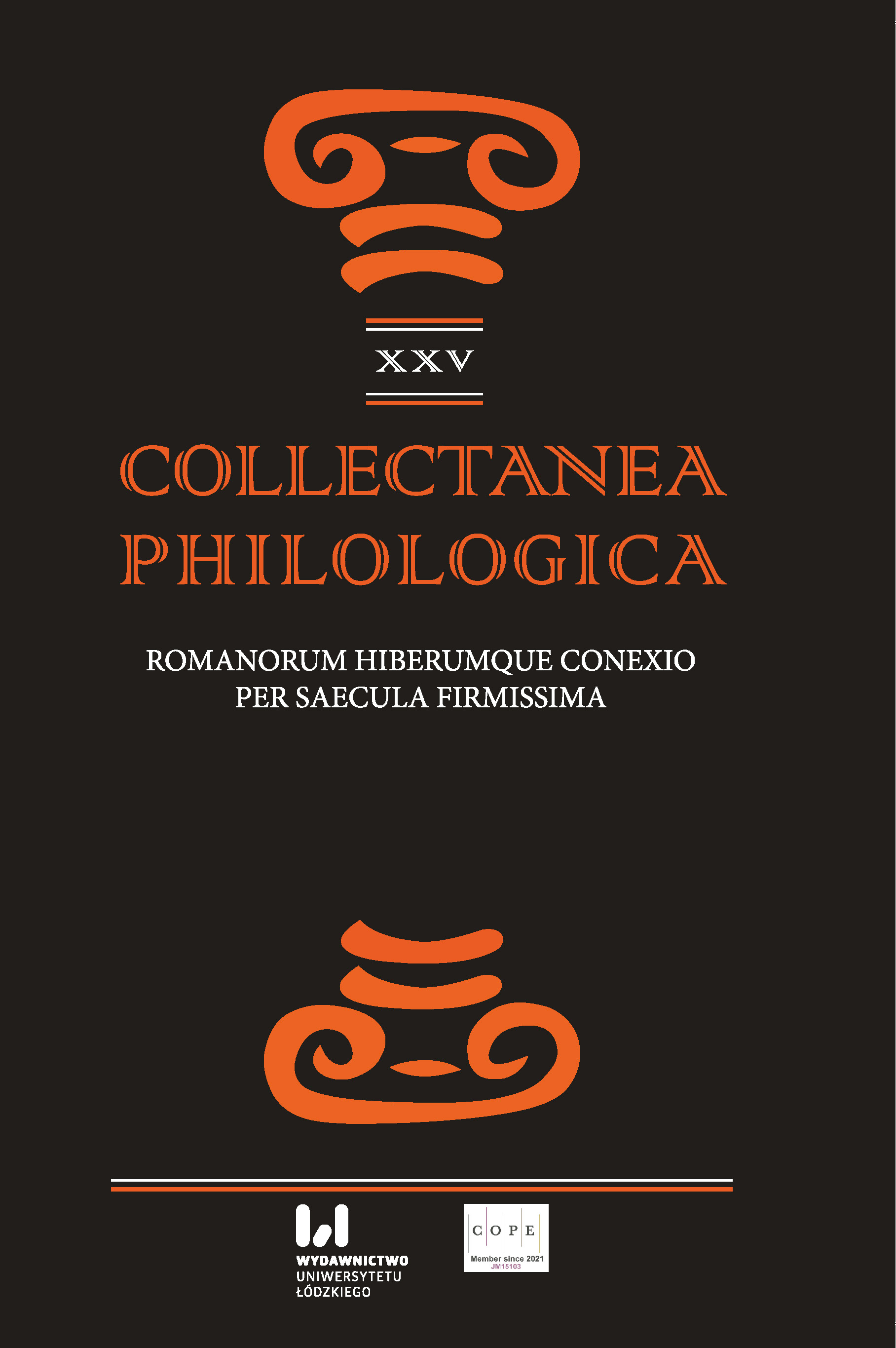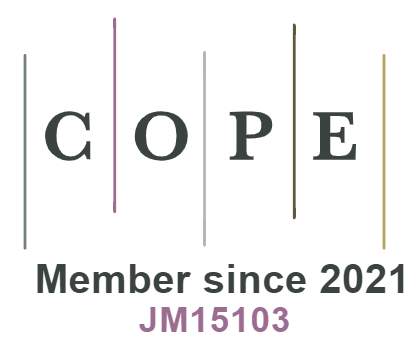Późnoantyczna Tarraco. Kontynuacja i zmiana w przestrzeni miejskiej (III–V wiek)
DOI:
https://doi.org/10.18778/1733-0319.25.16Słowa kluczowe:
Tarraco, forum prowincji, forum kolonii, port, suburbiumAbstrakt
Established in the 3rd century BCE, Tarraco reached its heyday in the 2nd century (AD). In the second half of the 2nd and at the beginning of the following century, despite the noticeable progressive recession of the city (abandonment of the theater and the nymphaeum, decrease of artistic activities), selected buildings and districts in the city were still flourishing (including the port area, the temple of Augustus and the amphitheater). The process of transformation of the city proceeded slowly, even in the 4th century, when the forum of the colonies was abandoned, some buildings, including the Concilium Provinciae Hispaniae Citerioris, continued to perform their functions. In the 5th century, as evidenced by epigraphy, a part of the square was still used for representative purposes, with the rest of it being replaced by residential buildings. The circus was still in use until the middle of the 5th century. The demolition, in the second half of the 5th century, of the temple of Augustus, which dominated the city, and the gradual erection of Christian basilicas, first outside the city and from the 6th century onwards, also within it, marked the end of an era in the history of the city.
Bibliografia
Alföldi, G. (1975). Die römischen inschriften von Tarraco. Berlin: De Gruyter.
Google Scholar
Amengual, J. (red.) (1987). Consenci. Correspondència amb Sant Agustí. Barcelona: Fundació Bernat Metge.
Google Scholar
Amo, D. (1979). Estudio crítico de la Necropolis Paleocristiana de Tarragona. Tarragona: Excma. Diputación Provincial Tarragona.
Google Scholar
Arbeloa i Rigau, J.-V.A. (1987). „La ocupació suburbial de les ciutats romanes: el sector nord-occidental de Tàrraco”. Butlleti Arqueològic 8–9. 87–124.
Google Scholar
Arrayás Morales, I. (2014). „Aprovechamiento y explotación de las aguas subterráneas en el noreste de la Península Ibérica en epoca romana”. Historie 11. 117–134.
Google Scholar
Auzoniusz (2017). Dzieła. t. 1. Przeł. J. Stadler. Wrocław: Uniwersytet Wrocławski.
Google Scholar
Collins, R. (1983). Early Medieval Spain. Unity in Diversity, 400–1000. London: Macmillan.
Google Scholar
DOI: https://doi.org/10.1007/978-1-349-17261-0
Collins, R. (2007). Hiszpania w czasach Wizygotów, 409–711. Przeł. J. Lang. Warszawa: Wydawnictwo Naukowe PWN.
Google Scholar
Díaz, M., García, M., Macias, J.M., Pociña, C.A. (2005). Les termes públiques de Tàrraco i la monumentalització de la façana marítima de la ciutat. W: Tribuna d’Arqueologia 2002–2003. Barcelona: Generalitat de Catalunya Departament de Cultura.
Google Scholar
Díaz, M., Puche, J.M., (2001). „El proceso de urbanización de la Tarraco republicana: los niveles constructivos del colector principal de la Ciudad”. Revista d’Arqueologia de Ponent 11–12. 291–319.
Google Scholar
Divjak, J. (wyd.) (1981). Augustinus, Ep. 11. W: “Corpus Scriptorum Ecclesiasticorum Latinorum” (CSEL) 88. Wien: Academia Litterarum Caesarea Vindobonensis.
Google Scholar
Gurt i Esparraguera, J.M. (2000–2001). „Transformaciones en el tejido de las ciudades hispanas durante la Antigüedad tardía: dinámicas Urbana”. Zephyrus 53–54. 443–471.
Google Scholar
Jaczynowska, M., Pawlak, M. (2008). Starożytny Rzym. Warszawa: Wydawnictwo TRIO.
Google Scholar
Kulikowski, M. (2005). Late Roman Spain and Its Cities. Baltimore: Johns Hopkins University Press.
Google Scholar
Lasheras González, A. (2015): „El paisaje urbano de Tarraco: reflexiones sobre su transformación desde una perspectiva social”. Revista Arkeogazte Anexo 1. 220–229.
Google Scholar
López Vilar J. (1997). „Un nuevo conjunto paleocristiano en las afueras de Tarraco”. Revista de Arqueología 197. 58–64.
Google Scholar
López Vilar, J. (2006). Les basíliques paleocristianes del suburbi occidental de Tarraco: el temple septentrional i el complex martirial de Sant Fructuós. Tarragona: Institut Català d’Arqueologia Clàssica.
Google Scholar
López Vilar, J. (2013). El santuario paleocristiano de los mártires Fructuoso, Augurio y Eulogio en el suburbio de Tarraco. W: Acta XV Congressus Internationalis Archeologiae Christianae Toletum 2008. Città del Vaticano: Pontificio Istituto di Archeologia Cristiana: 343–356.
Google Scholar
Macias, J.M., Menchón, J., Muñoz, A., Teixell, I. (2009). „La construcción del recinto imperial de Tarraco (provincia Hispania Citerior)”. Butlleti Arqueològic 5, 32. 423–479.
Google Scholar
Macias Solé, J.M. (2000). Tarraco en la Antigüedad tardía: Un proceso simultáneo de transformación urbana e ideológica. W: A. Ribera i Lacomba (red.), Los orígenes del cristianismo en Valencia y su entorno. Valencia: Ajuntament de Valencia: 259–271.
Google Scholar
Macias Solé, J.M. (2004). Les termes publiques de l’area portuaria de Tŕrraco. Carrer de Sant Miquel de Tarragona. Tarragona: Institut Català d’Arqueologia Clàssica.
Google Scholar
Macias Solé, J.M. (2009). Tarracona visigoda. ¿Una Ciudad en declive? W: Recópolis y la ciudad en la época visigoda. Alcalá de Henares: Museo Arqueológico Regional. 293–301.
Google Scholar
Macias Solé, J.M. (2011). Horrea y estructuras de almacenamiento en la ciudad y territorio de Tarraco. Una primera aproximación. W: J. Arce, B. Goffaux (red.). Horrea d’Hispanie et de la Mediterranée romaine. Madrid: Casa de Velázquez. 185–199.
Google Scholar
Macias Solé, J.M. (2014). El territorio y la ciudad de Tarraco. W: P. Pensabene, C. Sfameni (red.). La Villa restaurata e i nuovi studi sull’edilizia residenziale tardoantica. Atti del Convengno internazionale del Centro Interuniversitario di Studi sull’Edilizia abitativa tardoantica nel Mediterraneo (Piazza Armerina 7–10 novembre 2012). Bari: Edipuglia. 453–465.
Google Scholar
Macias Solé, J.M., Menchón Bes, J., Muñoz Melgar, A., Teixell Navarro, I. (2010). „La acrópolis de Tarraco y la implantación urbana del culto imperial en la capital de la Hispania Citerior”. Bollettino di Archeologia on line I. wydanie specjalne A/A8/4: 50–66.
Google Scholar
Macias Solé, J.M., Muñoz Melgar, A., Teixell Navarro, I. (2015). „La tumba martirial de los Santos Fructuoso, Augurio y Eulogio de Tarragona”. Adiós 112. 1–2.
Google Scholar
Macias Solé, J.M., Remolà Vallverdú, J.A. (2004). Topografía y evolución urbana. W: X. Dupré (red.). Tarragona Colonia Iulia Urbs Triumphalis Tarraco. Roma: LʼErma di Bretchsneider. 27–39.
Google Scholar
Macias Solé, J.M., Remolà Vallverdú, J.A. (2010). „Portus Tarraconensis (Hispania Citerior)”. Bollettino di Archeologia on line I. wydanie specjalne B/B7/10. 129–140.
Google Scholar
Mar, R., Guidi-Sánchez, J.J. (2010). Formación y usos del espacio urbano tardoantiguo en Tarraco. W: A. García (red.). Espacios urbanos en el occidente mediterráneo (S. VI–VIII). Toledo: Toletvum Visigodo. 173–182.
Google Scholar
Mar, R., Ruiz de Árbulo, J., Vivó, D., Beltrán-Caballero, J.A. (2015a). Tarraco. Arquitectura y urbanismo de una capital provincial romana. Tarragona: Universitat Rovira i Virgili, t. 1.
Google Scholar
Mar, R., Ruiz de Árbulo, J., Vivó, D., Beltrán-Caballero, J.A. (2015b). Tarraco. Arquitectura y urbanismo de una capital provincial romana. Tarragona: Universitat Rovira i Virgili, t. 2.
Google Scholar
Passio Fructuosi, Augurii et Eulogii (A. Fábrega Grau, wyd. I oprac.) (1953). Pasionario Hispánico (siglos VII–IX). t. 2. Madrid, Barcelona: Consejo Superior de Investigaciones Científicas. 183–186; Musurillo, H. (1972). The acts of the Christian martyrs. Oxford: Oxford University Press. 176–185; Riesco Chueca, P. (wyd. i oprac.) (1995). Pasionario Hispánico. Sevilla: Universidad de Sevilla. 71–79.
Google Scholar
Pauli Orosii historiarum adversum paganos libri VII. (1889). C. Zangemeister (wyd.). Leipzig: Teubner.
Google Scholar
Pawlak, M.N. (2007). Aecjusz i barbarzyńcy. Kraków: Wydawnictwo Atryda.
Google Scholar
Pérez Martínez, M. (2010). Tarraco christiana. Cristianización y organización eclesiástica de una capital provincial romana (siglos III al VII). Tarragona: Universitat Rovira i Virgili. https://www.tdx.cat/bitstream/handle/10803/8638/TESI_DOCTORAL.pdf?sequence=1&isAllowed=y
Google Scholar
Pérez Martínez, M. (2014). „El final del Imperio romano de Occidente en Tarraco. La inscripción de los emperadores León I y Anthemio”. Pyrenae 45, 2. 117–138.
Google Scholar
Remolà, J.A. (2013). Las cloacas de Hispania. Estado de cuestión: Tarraco. W: F. De Asís Escudero Escudero, M.P. Galve Izquierdo, Las Cloacas de Caesaraugusta y Elementos de Urbanismo y Topografía de la Ciudad Antigua. Incluye un Estado de la cuestión de las cloacas de Hispania. Zaragoza: Institución Fernando el Católico.
Google Scholar
Remolà Vallverdú, J.A. (2007). „La vil·la romana de Centcelles (Constantí, Tarragonès)”. Fòrum: temes d’història i d’arqueologia tarragonines 13. 171–189.
Google Scholar
Remolà Vallverdú, J.A., Lasheras González, A., Pérez Martínez, M. (2020). Tarraco, una base de operaciones de los ejércitos imperiales (ca. 420–470 dC). W: A. Carneiro, N. Christie, P. Diarte-Blasco (red.). Urban transformations in the Late Antique West: materials, agents and models. Coimbra: Imprensa da Universidade de Coimbra. 135–154.
Google Scholar
Ruiz Bueno, M.D., Acero Pérez, J., Romaní Sala, N. (2020). Transformaciones en el callejero de Augusta Emerita, Colonia Patricia y Tarraco en la antigüedad tardía: breve estudio comparativo. W: P. Mateos Cruz, C.J. Morán Sánchez (red.). Exemplum et Spolia. La reutilización arquitectónica en la transformación del paisaje urbano de las ciudades históricas. Mérida: Instituto de Arqueología (CSIC-Junta de Extremadura). 369–380.
Google Scholar
Ruiz de Árbulo, J., Mar Medina, R., Beltrán Caballero, J.A., Costa, A., Gris, F., Guidi-Sanchez, J.J. (2015). La gestión del agua en la antigua Tarraco. W: L. Borau, A. Borlenghi (red.). Aquae Ductus: actualité de la recherche en France et en Espagne: Actes du coloque international de Toulouse, 15–16 février 2013. Bordeaux: Fédération Aquitania. 117–137.
Google Scholar
Salom Garreta, C. (2009). „La arquitectura eclesiástica de Tarragona durante la antigüedad tardía. Nuevas interpretaciones”. Butlletí Arqueològic 5, 32. 685–756.
Google Scholar
Sánchez López, E., Martínez Jiménez, J. (2016). Los acueductos de Hispania, construcción y abandono. Madrid: Fundación Juanelo Turriano.
Google Scholar
Serra-Vilaró, J. (1936). Fructuós, Auguri i Eulogi, màrtirs sants de Tarragona. Tarragona: Tallers tipogràfics: Suc. de Torres & Virgili.
Google Scholar
Terrado Ortuño, P. (2019). El puerto de Tarraco en época romana (siglos II a.C.–III d.C.). Fuentes, historiografía y arqueología. Tarragona: Autoritat Portuària de Tarragona y Arola Editors.
Google Scholar
Zangemeister, K. (wyd.) (1882). Pavli Orosii Historiarum adversum paganos libri VII. W: Corpus Scriptorum Ecclesiasticorum Latinorum (CSEL) 5. Wien: Academia Litterarum Caesarea Vindobonensis.
Google Scholar
Zimnowodzka, A. (2019). „Topografia rzymskiej Tarragony w świetle źródeł pisanych i archeologicznych”. Manufactura Hispánica Lodziense 6. 265–284.
Google Scholar
DOI: https://doi.org/10.18778/8142-506-3.17
Ziółkowski, A. (2008). Historia Rzymu. Poznań: Poznańskie Towarzystwo Przyjaciół Nauk.
Google Scholar
Opublikowane
Jak cytować
Numer
Dział
Licencja

Utwór dostępny jest na licencji Creative Commons Uznanie autorstwa – Użycie niekomercyjne – Bez utworów zależnych 4.0 Międzynarodowe.












